Do you have a question about the Samsung S32A70 Series and is the answer not in the manual?
Important warnings and precautions for safe use.
Guidelines for electrical safety and preventing hazards.
Procedures for installing the monitor safely.
Safe operating procedures and warnings.
Instructions for cleaning the monitor.
Recommended posture for optimal viewing and ergonomics.
Steps for attaching the stand to the monitor.
Safety guidelines for moving the monitor.
Ensuring adequate ventilation space around the monitor.
How to adjust the tilt angle of the monitor.
Instructions for using an anti-theft locking device.
VESA mounting specifications and guidelines.
Overview of the monitor's control panel buttons and functions.
Guide to direct key functions for quick access to settings.
Pre-connection checks and procedures.
Description of various ports on the monitor.
How to connect and use a PC with the monitor.
Steps for connecting via HDMI cable.
Steps for connecting via HDMI-DVI cable.
Steps for connecting via DisplayPort cable.
How to connect audio output devices.
Instructions for connecting the power cable.
Methods for organizing connected cables.
Guide to setting the optimal screen resolution.
Compatible graphics cards for HDR10 support.
Settings related to picture quality and modes.
Adjusting the monitor's brightness level.
Adjusting the contrast between light and dark elements.
Adjusting the clarity of object outlines.
Adjusting color tone, saturation, and gamma settings.
Adjusting black levels for image quality.
Accelerating panel response rate for smoother video.
Optimizing settings for gaming experiences.
Changing picture size and aspect ratio for game mode.
Adjusting screen position and picture quality.
Features for eye comfort and protection.
Picture-in-Picture and Picture-by-Picture modes.
Selecting the audio output source.
Selecting the input source for the screen.
Changing picture size and aspect ratio for source.
Adjusting the contrast level for source display.
Adjusting the transparency of menu windows.
Adjusting the position of menu windows on the screen.
Setting the menu display language.
Setting how long the menu window stays on screen.
Showing remaining time until menu window disappears.
Enlarging the size of the Menu area.
Selecting the DisplayPort version for optimal performance.
Selecting the HDMI input port version.
Adjusting the audio volume settings.
Function to reduce power consumption.
Setting automatic power-off timers.
Setting PC/AV mode for picture enlargement.
Automatic switching to the connected input device.
Adjusting button response rate.
Configuring power LED behavior.
Configuring accessibility options like contrast and color.
Setting up a custom key for direct function access.
Optimizing brightness based on lighting environment.
Performing self-diagnosis for picture issues.
Instructions for updating the monitor's software.
Viewing current software information.
Resetting all settings to factory defaults.
Guide to installing and using Easy Setting Box software.
Common issues and limitations during software installation.
Hardware and OS requirements for software.
Instructions for installing product drivers.
Preliminary checks before contacting support.
Diagnosing screen-related problems.
Verifying screen resolution and frequency settings.
Common issues and their solutions.
Troubleshooting inconsistent screen color.
Diagnosing issues with white color reproduction.
Troubleshooting no image with blinking power LED.
Solutions for blurry text display.
Addressing choppy video playback issues.
Troubleshooting problems related to audio output.
Resolving issues related to the source device.
Steps to change screen refresh rate.
Steps to change screen resolution.
Instructions for enabling power-saving features.
General specifications of the monitor models.
Information on Plug-and-Play compatibility.
Information on pixel characteristics.
Synchronization specifications for signal modes.
Supported resolutions and frequency ranges.
Definition and measurement of horizontal frequency.
Definition and measurement of vertical frequency.
Conditions for charging service fees.
Situations not considered product defects.
Causes of damage due to customer mishandling.
Other reasons for potential service charges.
Information on Waste Electrical and Electronic Equipment disposal.
Guidelines for environmentally safe product disposal.
Important warnings and precautions for safe use.
Guidelines for electrical safety and preventing hazards.
Procedures for installing the monitor safely.
Safe operating procedures and warnings.
Instructions for cleaning the monitor.
Recommended posture for optimal viewing and ergonomics.
Steps for attaching the stand to the monitor.
Safety guidelines for moving the monitor.
Ensuring adequate ventilation space around the monitor.
How to adjust the tilt angle of the monitor.
Instructions for using an anti-theft locking device.
VESA mounting specifications and guidelines.
Overview of the monitor's control panel buttons and functions.
Guide to direct key functions for quick access to settings.
Pre-connection checks and procedures.
Description of various ports on the monitor.
How to connect and use a PC with the monitor.
Steps for connecting via HDMI cable.
Steps for connecting via HDMI-DVI cable.
Steps for connecting via DisplayPort cable.
How to connect audio output devices.
Instructions for connecting the power cable.
Methods for organizing connected cables.
Guide to setting the optimal screen resolution.
Compatible graphics cards for HDR10 support.
Settings related to picture quality and modes.
Adjusting the monitor's brightness level.
Adjusting the contrast between light and dark elements.
Adjusting the clarity of object outlines.
Adjusting color tone, saturation, and gamma settings.
Adjusting black levels for image quality.
Accelerating panel response rate for smoother video.
Optimizing settings for gaming experiences.
Changing picture size and aspect ratio for game mode.
Adjusting screen position and picture quality.
Features for eye comfort and protection.
Picture-in-Picture and Picture-by-Picture modes.
Selecting the audio output source.
Selecting the input source for the screen.
Changing picture size and aspect ratio for source.
Adjusting the contrast level for source display.
Adjusting the transparency of menu windows.
Adjusting the position of menu windows on the screen.
Setting the menu display language.
Setting how long the menu window stays on screen.
Showing remaining time until menu window disappears.
Enlarging the size of the Menu area.
Selecting the DisplayPort version for optimal performance.
Selecting the HDMI input port version.
Adjusting the audio volume settings.
Function to reduce power consumption.
Setting automatic power-off timers.
Setting PC/AV mode for picture enlargement.
Automatic switching to the connected input device.
Adjusting button response rate.
Configuring power LED behavior.
Configuring accessibility options like contrast and color.
Setting up a custom key for direct function access.
Optimizing brightness based on lighting environment.
Performing self-diagnosis for picture issues.
Instructions for updating the monitor's software.
Viewing current software information.
Resetting all settings to factory defaults.
Guide to installing and using Easy Setting Box software.
Common issues and limitations during software installation.
Hardware and OS requirements for software.
Instructions for installing product drivers.
Preliminary checks before contacting support.
Diagnosing screen-related problems.
Verifying screen resolution and frequency settings.
Common issues and their solutions.
Troubleshooting inconsistent screen color.
Diagnosing issues with white color reproduction.
Troubleshooting no image with blinking power LED.
Solutions for blurry text display.
Addressing choppy video playback issues.
Troubleshooting problems related to audio output.
Resolving issues related to the source device.
Steps to change screen refresh rate.
Steps to change screen resolution.
Instructions for enabling power-saving features.
General specifications of the monitor models.
Information on Plug-and-Play compatibility.
Information on pixel characteristics.
Synchronization specifications for signal modes.
Supported resolutions and frequency ranges.
Definition and measurement of horizontal frequency.
Definition and measurement of vertical frequency.
Conditions for charging service fees.
Situations not considered product defects.
Causes of damage due to customer mishandling.
Other reasons for potential service charges.
Information on Waste Electrical and Electronic Equipment disposal.
Guidelines for environmentally safe product disposal.
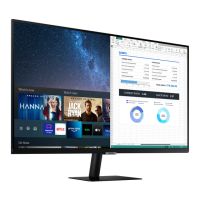

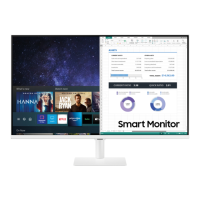


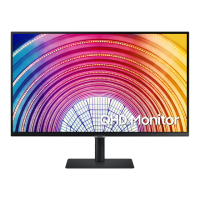


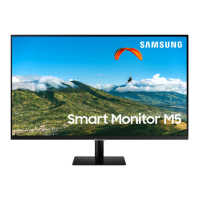

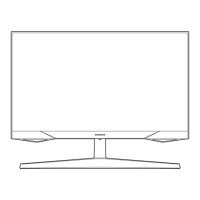

